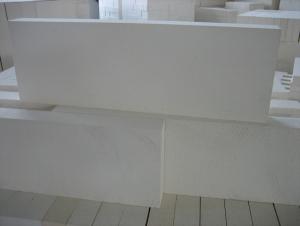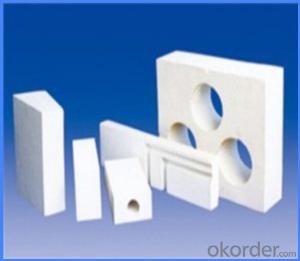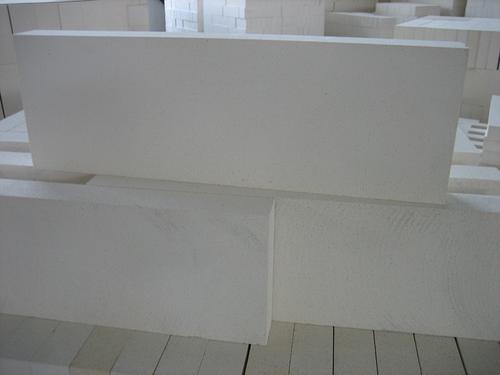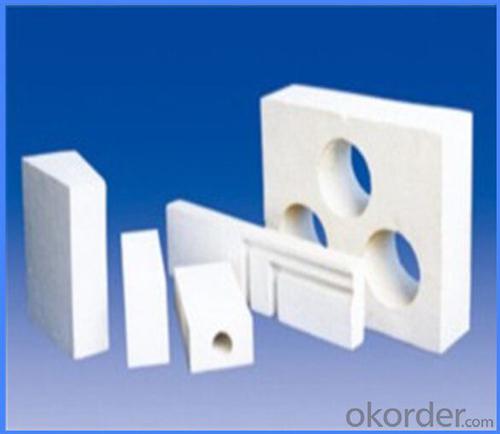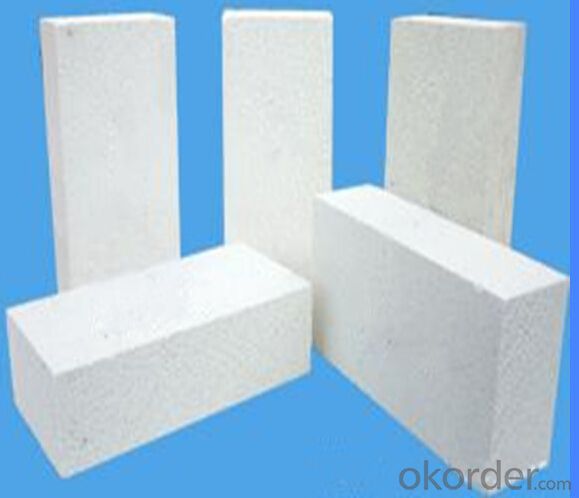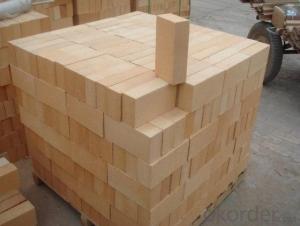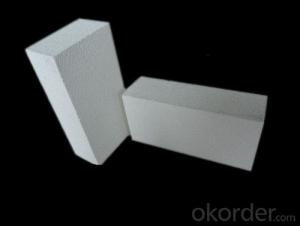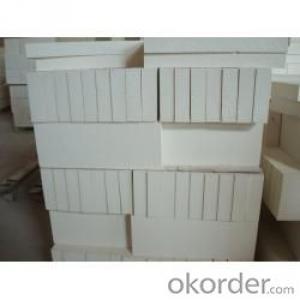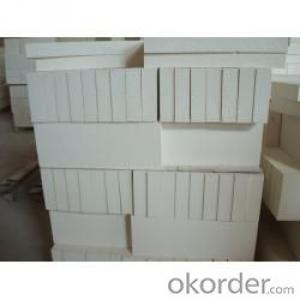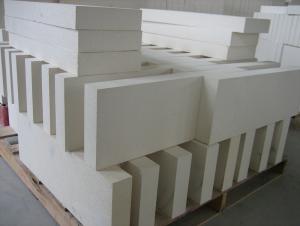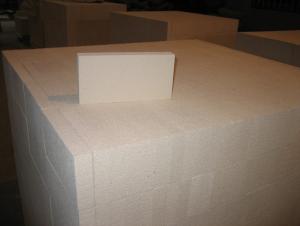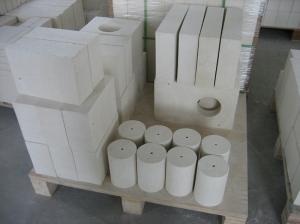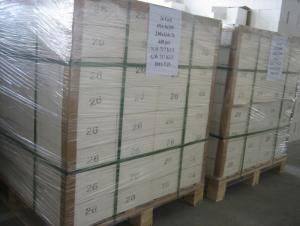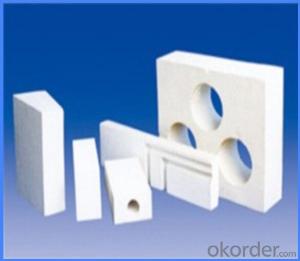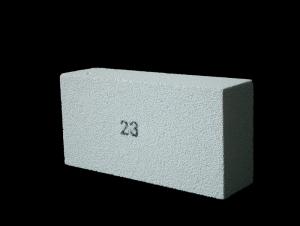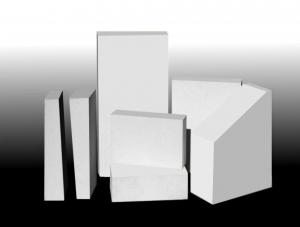Refractory Mullite Insulating Refractory Brick JM 34
- Loading Port:
- Shanghai
- Payment Terms:
- TT OR LC
- Min Order Qty:
- 20 m.t.
- Supply Capability:
- 20 m.t./month
OKorder Service Pledge
OKorder Financial Service
You Might Also Like
Okorder series heat insulation brick
Okorder series thermal insulation brick is an effective, energy saving, low carbon, environmental protection advanced, according to the ASTM standard manufacturing products. Okorder series products have all kinds of materials in the field of metallurgy, industrial furnaces, aluminum, the best Li Ning petrochemical and insulation, electric power and glass ceramics. They can be used as part of an insulation or not to melt. Products have been widely used in the following furnace, achieved satisfactory results.
Application of heat preservation brick
Metallurgical Industry: blast furnace, hot blast furnace, heating furnace, etc..
Petrochemical Industry: ethylene cracking furnace, hydrogen furnace, the main furnace, heating furnace, etc..
Ceramic industry: roller kiln, kiln, etc..
Glass industry: glass furnace regenerator, etc.
Carbon industry: carbon furnace, etc..
Aluminum electrolysis industry: aluminum reduction cell, etc.
Other industries: tunnel kiln, shuttle kiln, etc..
Advantages of heat insulation brick
Low thermal conductivity: many air holes will bring good thermal insulation effect, energy saving.
High crushing strength: high crushing strength, volume stability.
Low heat storage: small heat storage, absorb more heat, energy-saving effect is obvious.
Chundu: High-speed Rail, low content of alkali metal impurities.
Accuracy: the size of the brick machining precision, cutting and grinding the special shape, speed up the brick.
Technical Data
ITEM | GJM30 | GJM28 | GJM26 | GJM23 |
Classification Temperature, ℉/℃ | 3000/1650 | 2800/1540 | 2600/1430 | 2300/1260 |
Bulk Density,g/cm³ | ≤1.0 | ≤0.9 | ≤0.8 | ≥0.5 |
Reheating Linear Change, % | ≤0.9 (1550℃,12 h) | ≤0.8 (1510℃,12 h) | ≤0.7 (1410℃,12 h) | ≤0.5 (1230℃,12 h) |
Al2O3 Content, % | ≥75 | ≥65 | ≥55 | ≥45 |
Fe2O3 Content, % | ≤0.5 | ≤0.6 | ≤0.7 | ≤1.0 |
Thermal Conductivity: | ||||
800℃, w/m.k | ≤0.39 | ≤0.37 | ≤0.35 | ≤0.18 |
1000℃, w/m.k | ≤0.43 | ≤0.41 | ≤0.39 | ≤0.20 |
1200℃, w/m.k | ≤0.48 | ≤0.46 | ≤0.43 | --- |
Insulating brick
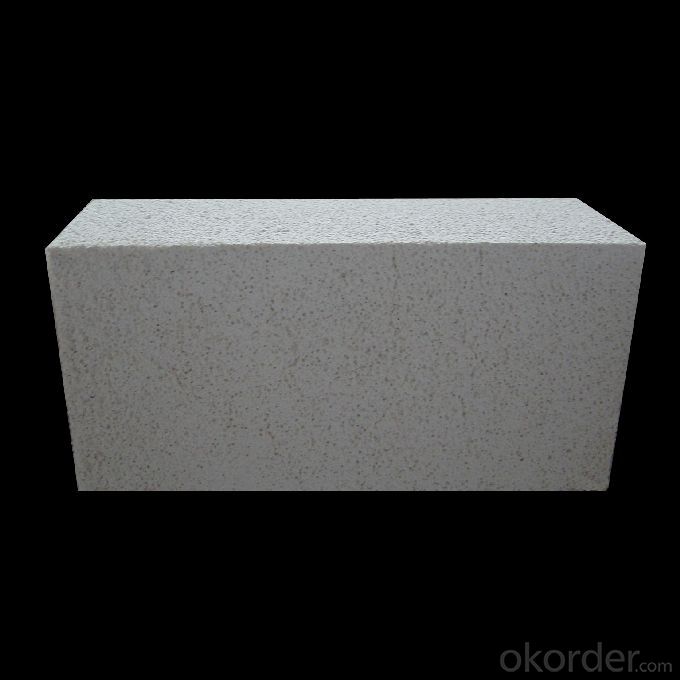
- Q: Can insulating fire bricks be used in the construction of boilers?
- Yes, insulating fire bricks can be used in the construction of boilers. Insulating fire bricks are made from lightweight materials that have high thermal insulation properties, making them suitable for use in high-temperature applications such as boilers. These bricks help to reduce heat loss and improve energy efficiency by preventing the escape of heat from the boiler. Additionally, they have excellent resistance to thermal shock and can withstand extreme temperatures, making them a reliable choice for boiler construction.
- Q: Are insulating fire bricks suitable for the insulation of chimneys?
- Yes, insulating fire bricks are suitable for the insulation of chimneys. These bricks are designed to withstand high temperatures and provide excellent thermal insulation, making them an ideal choice for chimney insulation. They help to prevent heat loss, improve energy efficiency, and reduce the risk of chimney fires.
- Q: Are insulating fire bricks resistant to flame penetration?
- Indeed, the resistance of insulating fire bricks to flame penetration is undeniable. Crafted from materials boasting elevated melting points and exceptional thermal insulation properties, these bricks are engineered to endure extreme temperatures and thwart the infiltration of flames. Consequently, they are frequently employed in scenarios necessitating insulation and safeguarding against heat, including furnaces, kilns, and fireplaces. The impeccable composition and structure of insulating fire bricks confer upon them an extraordinary capacity to withstand flame penetration, thereby efficaciously confining and regulating the propagation of fire.
- Q: Can insulating fire bricks be used in cryogenic applications?
- Insulating fire bricks, also known as refractory bricks, serve primarily for high-temperature purposes and find common usage in furnaces and kilns. Nonetheless, when it comes to cryogenic applications involving extremely low temperatures, insulating fire bricks may prove to be unsuitable. Cryogenic temperatures, usually below -150 degrees Celsius (-238 degrees Fahrenheit), present distinctive challenges for materials due to the severe thermal stresses they endure. Insulating fire bricks typically consist of materials like alumina and silica, which possess limited resistance to thermal shock and can become brittle at exceedingly low temperatures. This brittleness exposes them to the risk of cracking and failure under cryogenic conditions. Furthermore, insulating fire bricks exhibit relatively high thermal conductivity, implying that they conduct heat rather efficiently. In cryogenic applications, where minimizing heat transfer is of utmost importance, materials with lower thermal conductivity are preferred. Consequently, insulating fire bricks, with their higher thermal conductivity, may not be the most effective choice for cryogenic applications. Instead, materials with exceptional thermal insulation properties and low thermal conductivity, like aerogels or foams made from silica or carbon, are often favored for cryogenic applications. These materials offer superior thermal insulation and better resistance to extreme temperatures, ensuring efficient and dependable performance in cryogenic environments. In conclusion, while insulating fire bricks find suitability in high-temperature applications, they may not be the optimal selection for cryogenic applications due to their brittleness at low temperatures and relatively high thermal conductivity. Materials specifically designed for cryogenic conditions, such as aerogels or foams, prove to be more suitable for these extreme temperature environments.
- Q: Can insulating fire bricks be used in the construction of refractory linings?
- Indeed, the utilization of insulating fire bricks is possible when constructing refractory linings. These bricks are explicitly engineered to possess exceptional thermal insulation characteristics, rendering them highly suitable for situations necessitating the containment of extreme temperatures. They are frequently employed in the establishment of furnaces, kilns, and other environments that experience elevated heat levels. The insulating attributes of these bricks aid in diminishing heat dissipation, enhancing energy efficiency, and upholding a consistent temperature within the refractory lining. Furthermore, insulating fire bricks are lightweight and effortless to manipulate, thereby constituting a pragmatic selection for the construction of refractory linings.
- Q: Are insulating fire bricks suitable for insulation in petrochemical plants?
- Yes, insulating fire bricks are suitable for insulation in petrochemical plants. Insulating fire bricks are made from lightweight materials with high insulating properties, such as ceramic fibers or lightweight refractory aggregates. These bricks are designed to have low thermal conductivity, which allows them to effectively reduce heat transfer and provide insulation in high-temperature environments. In petrochemical plants, where processes involve the handling of flammable and hazardous materials, maintaining proper insulation is crucial for safety and efficiency. Insulating fire bricks can withstand high temperatures and provide excellent thermal insulation, helping to reduce heat loss and minimize energy consumption. Furthermore, insulating fire bricks are resistant to chemical corrosion, making them suitable for use in petrochemical plants where exposure to corrosive chemicals is common. These bricks are also durable and have good mechanical strength, allowing them to withstand the harsh conditions in petrochemical plants. Overall, insulating fire bricks are an ideal choice for insulation in petrochemical plants due to their high-temperature resistance, excellent thermal insulation properties, chemical resistance, and durability.
- Q: Can insulating fire bricks be used in brick kilns?
- Insulating fire bricks are indeed capable of being utilized in brick kilns. These bricks are specifically crafted to possess high thermal resistance, rendering them an excellent option for insulating the walls of a brick kiln. With the ability to withstand exceedingly high temperatures, they assist in maintaining consistent heat levels within the kiln. Through the utilization of these insulating fire bricks, the kiln's heat loss is significantly reduced, consequently enhancing energy efficiency and diminishing fuel consumption. Furthermore, employing insulating fire bricks also serves to safeguard the outer layers of the kiln from excessive heat, thereby preventing any potential damage and extending the kiln's lifespan. All in all, insulating fire bricks are a suitable and highly effective choice for implementation in brick kilns.
- Q: Can insulating fire bricks be used in the construction of glass slump molds?
- Insulating fire bricks can indeed be utilized in the construction of glass slump molds. These bricks are composed of lightweight materials capable of enduring high temperatures, rendering them appropriate for kilns and other heat-intensive applications. When creating a glass slump mold, it is crucial to possess a material capable of withstanding the heat generated as the glass slumps and takes form. Insulating fire bricks offer the necessary insulation and heat resistance essential for this procedure. They can be cut and shaped to accommodate the desired mold design without succumbing to degradation or crumbling, even after repeated firings. As a whole, insulating fire bricks present a dependable and long-lasting choice for constructing glass slump molds.
- Q: How do insulating fire bricks affect the overall noise reduction of a structure?
- Insulating fire bricks can significantly contribute to the overall noise reduction of a structure. These bricks have excellent sound-absorbing properties, which help in reducing the transmission of sound waves through the walls or partitions. By effectively dampening and absorbing sound vibrations, insulating fire bricks can minimize the noise pollution within a structure, creating a quieter and more peaceful environment.
- Q: How do insulating fire bricks affect the overall efficiency of a heating system?
- Insulating fire bricks play a crucial role in enhancing the overall efficiency of a heating system. These bricks are specifically designed to have low thermal conductivity, meaning they are excellent at trapping and retaining heat within the system. By using insulating fire bricks, the heat loss from the heating system is significantly reduced, resulting in improved energy efficiency. One of the key benefits of insulating fire bricks is their ability to minimize heat transfer through conduction. These bricks have a high resistance to heat flow, which means they act as a barrier, preventing the heat from escaping the system. This is especially important in areas where high temperatures are generated, such as furnaces or kilns. By containing the heat within the system, insulating fire bricks enable the heating system to maintain a consistent temperature, reducing the need for excessive energy consumption to compensate for heat loss. Furthermore, insulating fire bricks also help decrease heat loss through radiation. These bricks have a high emissivity, which means they radiate less heat than other materials. As a result, the heat produced by the system is focused on the desired area, rather than being wasted through radiation. This not only improves the efficiency of the heating system but also ensures that the heat is effectively utilized for the intended purpose. Another advantage of insulating fire bricks is their ability to withstand high temperatures without deteriorating. Due to their composition and manufacturing process, these bricks can handle extreme heat levels, maintaining their structural integrity over time. This durability is important for the longevity of the heating system and ensures that the insulating properties of the bricks remain intact. In summary, insulating fire bricks have a significant positive impact on the overall efficiency of a heating system. Their low thermal conductivity, ability to minimize heat transfer through conduction and radiation, and durability at high temperatures all contribute to reducing heat loss and improving energy efficiency. By incorporating insulating fire bricks into a heating system, users can enjoy a more efficient and cost-effective heating solution.
Send your message to us
Refractory Mullite Insulating Refractory Brick JM 34
- Loading Port:
- Shanghai
- Payment Terms:
- TT OR LC
- Min Order Qty:
- 20 m.t.
- Supply Capability:
- 20 m.t./month
OKorder Service Pledge
OKorder Financial Service
Similar products
Hot products
Hot Searches
Related keywords
